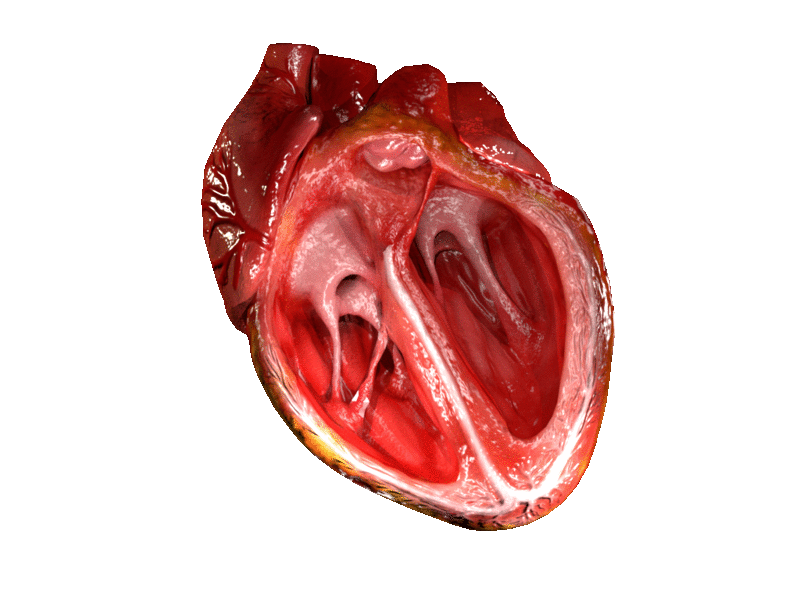Glycosides and Congestive Heart Failure
Introduction[edit | edit source]
Digoxin, sold under the brand name Lanoxin among others, is a medication used to treat, among other things, congestive heart failure.[1]
The two types of glycosides used to treat CHF are digoxin and digitoxin, the primary being digoxin.
Digoxin is a positive inotropic agent that activates the sodium-calcium membrane exchange pump which increases the intracellular calcium concentrations. This increase in calcium will lead to stronger contractions of the heart. Digoxin also reduces sympathetic responses via the vagus nerve, which will reduce overall heart rate. The combination of increased contractility and reduced heart rate creates a more efficient pump for cardiac output[2].
Digitoxin is similar in structure and effects to digoxin, though the effects are longer-lasting. Unlike digoxin (which is eliminated from the body via the kidneys), it is eliminated via the liver, so could be used in patients with poor kidney function. However the evidence for its use is poor and it is rarely used in western medicine.[3]
Digoxin[edit | edit source]
Pharmacokinetics[edit | edit source]
Digoxin is traditionally taken orally, with doses between 0.125mg- 0.25mg daily, with large storage taking place in skeletal muscles.
It is mostly absorbed through the small intestine and metabolized in the liver through hydrolysis, oxidation, and conjugation[4]. Approximately 70% of digoxin is cleared through the kidneys and has a half-life of 36 hours.
Side effects[edit | edit source]
Toxicity is a common adverse effect caused by higher concentrations of serum Digoxin. Monitoring blood concentrations is important to prevent toxicity, especially if the patient has renal complications or is elderly. Serum digoxin concentration levels should remain between 0.5 nmol/L to 0.9 nmol/L, depending on the body weight of the patient. Chronic toxicity, more common than acute toxicity, may occur if these concentrations reach above the therapeutic dose for a prolonged period of time.
These effects include dysrhythmias, altered mental status, drowsiness, visual disturbances, gastrointestinal issues, and altered potassium levels[5].
Identifying signs of these adverse effects are critical for a physical therapists to maintain patient safety. Despite these potential negative effects, patients on digoxin can participate in physical therapy better than without the medication. Due to digoxin’s effect on cardiac output, the heart is able to more effectively pump blood into the system, improving the exercise tolerance of the patient.
References[edit | edit source]
- ↑ Wikipedia Digoxin Available from: https://en.wikipedia.org/wiki/Digoxin#Heart_failure (last accessed 19.6.2019)
- ↑ Campbell, T. J., & MacDonald, P. S. (2003, July 21). Digoxin in heart failure andcardiac arrhythmias. Retrieved from https://www.mja.com.au/journal/2003/179/2/digoxin-heart-failure-and-cardiac-arrhythmias
- ↑ WIkipedia Digitoxin Available from: https://en.wikipedia.org/wiki/Digitoxin#cite_note-Belz-1 (last accessed 19.6.2019)
- ↑ Iisalo E. Clinical pharmacokinetics of digoxin. Current neurology and neuroscience reports. https://www.ncbi.nlm.nih.gov/pubmed/322907. Accessed November 26, 2018.
- ↑ MacLeod-Glover, N., Mink, M., Yarema, M., & Chuang, R. (2016). Digoxin toxicity: Case for retiring its use in elderly patients? Canadian Family Physician, 62(3), 223–228







